Of considerable popularity among lovers of indoor plants is the flower of Sansevier, or Sanseverie, or mother-in-law's language. The plant fits perfectly into any interior and at the same time it is unpretentious in care. There are about 60 varieties of this succulent that differ in color, shape and size. Growing a flower at home is easy, you just need to know some of the features for care.
Content
Characteristics of mother-in-law's flower language and species diversity
Sansevier is a perennial, evergreen, indoor plant of the Asparagus family. There are more than 60 varieties of this flower. All of them have no stem, and their long leaves are collected in rosettes. Sometimes green-white flowers bloom on the sansevier, they have narrow petals and long stamens.
The following species are most often grown at home:
- Sansevieria is three-way. It has long light green leaves with dark transverse stripes. Flowering nondescript, lasts a little over a week. Sometimes berries may appear in place of flowers.
- Sensational Bentle. Selected species of sansevier, characterized by white stripes and dark emerald dots on the leaves.
- Sanseviera Hanni. A stunted species whose leaves do not exceed 30 cm in length. The tips of the dark green leaves bend unusually outward, and the bush itself resembles a vase.
- Silver Hanni. A dwarf species of pike tail, which has a silver-green color. The variety was bred artificially.
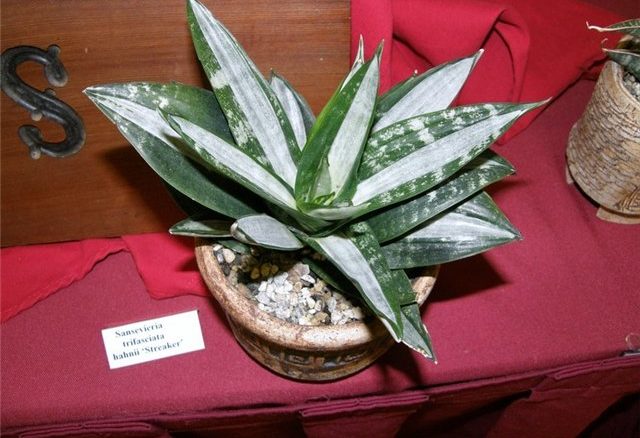
Silver Hanni - Twisted Sister. The plant has olive-green with dark green speckled leaves with a yellow border. A distinctive feature of this species is the unusual shape of the bush.
This is only a small part of all existing species of pike tail. All sanseviers are unpretentious in care, while they have different colors and shapes. That is why the pike tail will decorate any room.
Secrets and difficulties of home flower care
In natural conditions, Sansevier grows in the arid climatic conditions of Africa, Sri Lanka and India. That is why the plant does not require special care. But in order to get a truly “royal” bush, you should know about some of the nuances.
Lighting
In nature, sansevieria grows in fairly lighted areas, so at home it is necessary to provide the flower with a lot of sunlight. In this case, the light must be scattered, as direct sunlight can harm the plant. In summer, succulents that are located on the south side need to be moved or shaded.
Temperature and humidity
Sansevier perfectly tolerates any temperature above 5 degrees. However, the most optimal temperature will be 16-21 degrees. In the summer, you can place a flower in the open air, since neither cold nor excessive heat are not afraid of him.
The most suitable for growing Sansevier is dry air. It is extremely rare to spray the plant and only in the summer.From time to time, dust can be removed from the leaves of the flower by wiping it with a damp cloth.
Watering and feeding
Dry soil is not as bad for sansevier as excessive moisture. Therefore, it is important to strictly adhere to the watering schedule. In the period from April to October, the plant must be watered after the soil has dried well. In this case, it is necessary to exclude the ingress of moisture into the flower itself, as this can lead to decay. In winter, the plant is rarely watered - every 14 days.
Fertilizing in winter is not necessary. But in the warm season, you can fertilize the plant 1 time per month. For this, special feeding for cacti and succulents is perfect.
How to propagate a flower at home?
Cuckoo tail can be propagated in two ways:
- Division of the sheet. This is not difficult, but it is worth noting that the motley varieties with such propagation will lose their pattern. So, in order to propagate the sansevier, you must follow these steps:
- prepare fully ripened leaves;
- cut the sheet across into several parts (it is important to remember where the upper and lower sides of the sheet are);
- leave the pieces to dry for 2 days;
- plant leaves in moist sand with the bottom side down;
- after 2 months, transplant the rooted flower into the soil.
- There is an easier way to propagate sansevier - by dividing the roots. To divide the flower in this way, you need to carefully pull the plant out of the pot and divide the rhizome into several parts. The resulting bushes can be immediately planted in the soil or put in a jar of water. Before landing, the place of the cut must be sprinkled with coal powder.
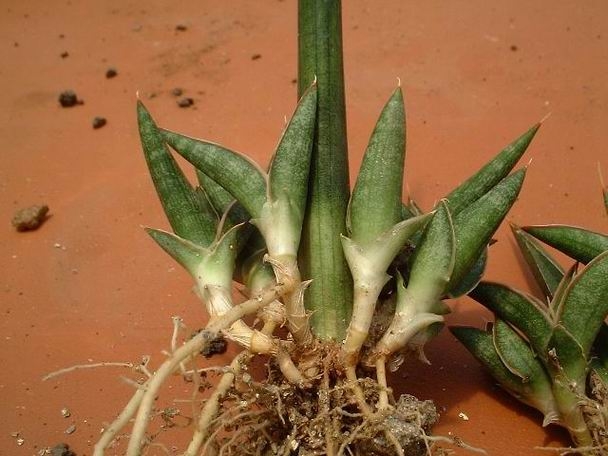
Reproduction of Sansevieria by root division
Transfer
Sanseviera is growing fast enough, so it must be regularly transplanted. This should be done in early spring, when succulent has not yet entered the phase of active growth. A week before transplanting, you need to stop watering the plant. The flower pot should be shallow, but wide enough, it should have drainage holes.
Transplant Algorithm:
- Carefully remove the plant from the pot. To do this, grab your hand around all the leaves of the flower as close to the base as possible, tilt the pot a little and extract the plant along with a lump of earth.
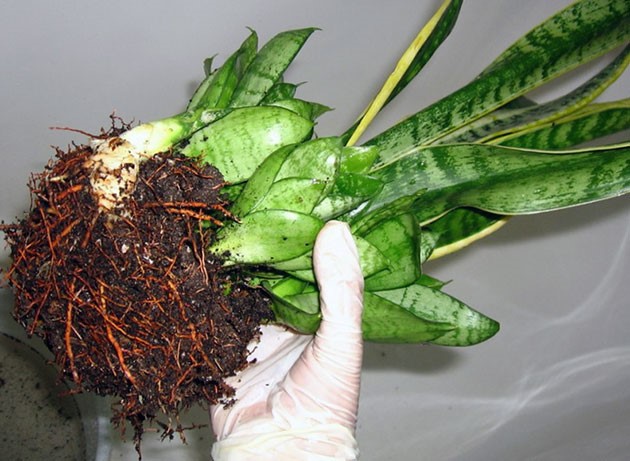
Extract a flower from a pot - Separate the sockets from each other, cutting the root with a pruner, and sprinkle the cut with charcoal powder.
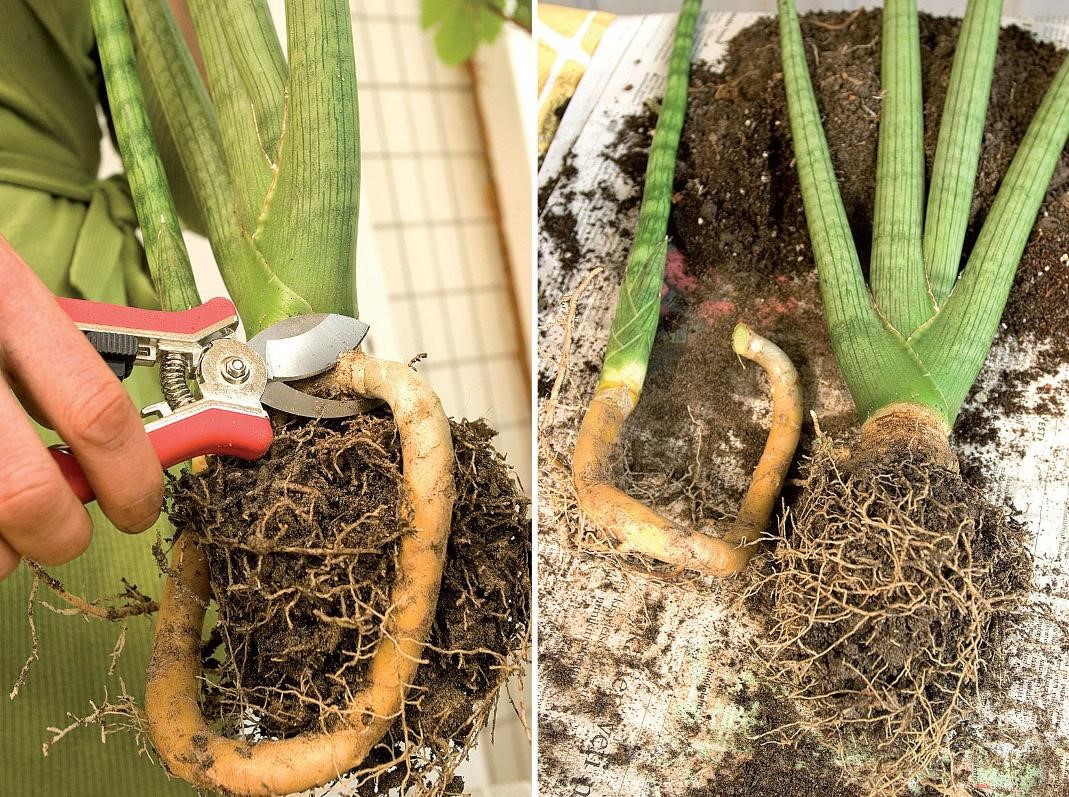
Outlet section - Pour a layer of drainage into the pot. Top with a thick layer of soil.
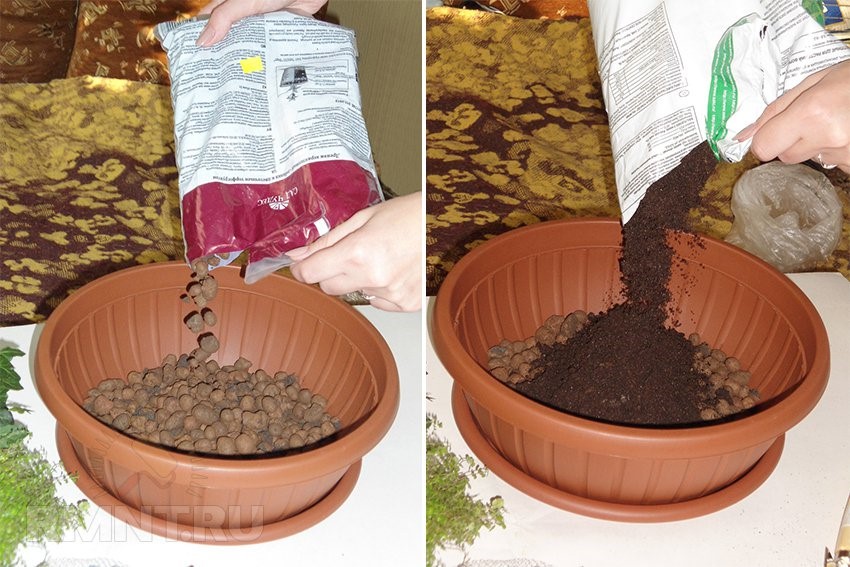
Layers of Drainage and Soil - Place the flower in the center and cover it with earth.
- Carefully water, trying not to get on outlets.
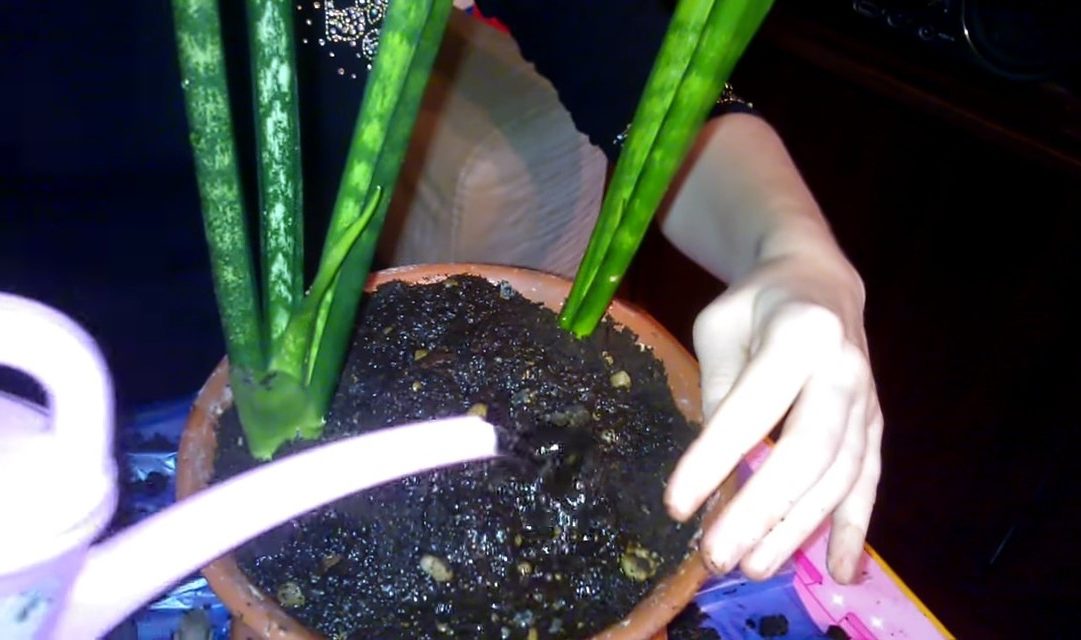
Watering a transplanted flower
Transplanting sansevieria, it is not necessary to share it. You can pick up a large enough pot and transplant the flower by transshipment.
Diseases and pests of mother-in-law's plant tongue
Despite the special unpretentiousness of the flower, it is not safe from the occurrence of diseases and pests. In order to identify them in time, it is necessary to conduct a thorough inspection of the plant.
Most often, sansevieria is affected by viral diseases, namely various rot:
- Soft. With this form, the rot of the base of the sheet plates becomes soft and starts to smell unpleasant. Rotting occurs due to increased humidity or contaminated soil.
- Root This type of rot affects the roots of the plant. As a result, shoots and leaves begin to decay, dark spots appear. The disease can occur due to the ingress of water on the basal part of the leaves.
- Sheet. On the leaves of the plant there are round spots covered with spores. Gradually, these spots darken. The cause of rot can be abundant and frequent watering.
The plant and various pests can affect:
- Spider mite. Yellowing leaves with white spots indicate the presence of the pest. If the plant is not treated, then it dies over time.
- Thrips. The leaves of the affected plant become brown with a silver sheen. Colonies of pests can be seen on the bottom of the sheet, and light spots appear on the top side.
- Mealybug. White plaque appears on the leaves, they wither and fall off. In the lower part of the plant you can see small white insects.
In order to prevent the appearance of diseases, it is necessary to follow the rules for caring for the flower. You should also plant the plant in sterilized soil.
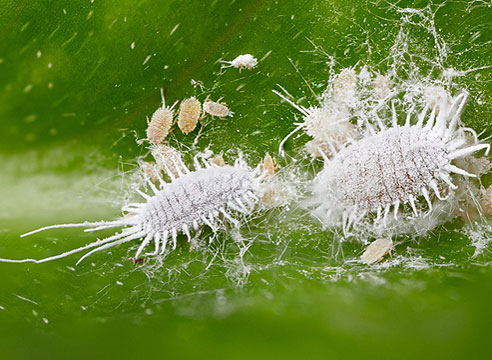
If the plant is affected by rot, it is necessary to stop frequent watering. Affected and sluggish areas must be removed, and the flower itself transplanted into new soil. To avoid new infection, the soil is preliminarily fired in the oven.
If the flower is struck by spider mites, the following measures must be taken:
- wipe the leaves with a cotton swab dipped in an infusion of orange peels;
- process the flower with Fitoverm.
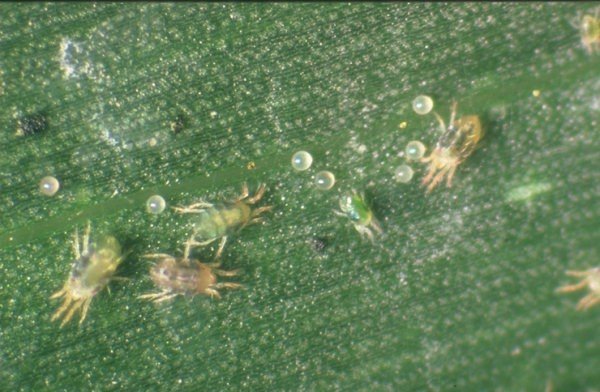
If the mealybug struck the sansevier, you need to:
- remove plaque from leaves using a cotton pad soaked in soapy water;
- process flower karbofosom.
When thrips occur, you need to regularly spray the plant with insecticides until complete recovery.
Useful properties and use in traditional medicine
The cuckoo tail has long been prized for its healing properties. To this day, it is used as a healing agent for various injuries. On the basis of sansevier, medicines are made for the treatment of ulcers, gastrointestinal diseases, cystitis.
There are many popular recipes using pike tail, the following are the most popular.
Sansevier tincture for the treatment of cystitis and adnexitis. Ingredients:
- chopped pike tail leaves - 1/3 cup;
- vodka - 150 ml.
Preparation: Place the leaves in a dark glass bottle and fill them with vodka. Insist in the refrigerator for 21 days, then strain thoroughly.
Application: take orally, twice a day, 10 ml. Do not take tincture on an empty stomach.
Sansevier broth for the treatment of itching and scabies. Ingredients:
- cuckoo leaf;
- 200 ml of hot water.
Preparation: Grind the sheet and add water. Bring to a boil and cook over low heat for about 10 minutes. Strain the broth.
Application: divide a glass of broth into small portions and drink throughout the day. To process the affected areas, wiping with a cotton pad soaked in broth.
A decoction of the roots of a mother tongue to strengthen immunity. Ingredients:
- a handful of crushed roots;
- glass of water.
Preparation: Boil water and add roots to it. Leave to infuse for 30 minutes.
Application: use on an empty stomach 10 ml 3 times a day.
Common Growing Questions
Sansevier is an unpretentious houseplant. It tolerates various adverse conditions. For this reason, the plant can be used to decorate a variety of rooms: offices, school rooms, cafes, etc.

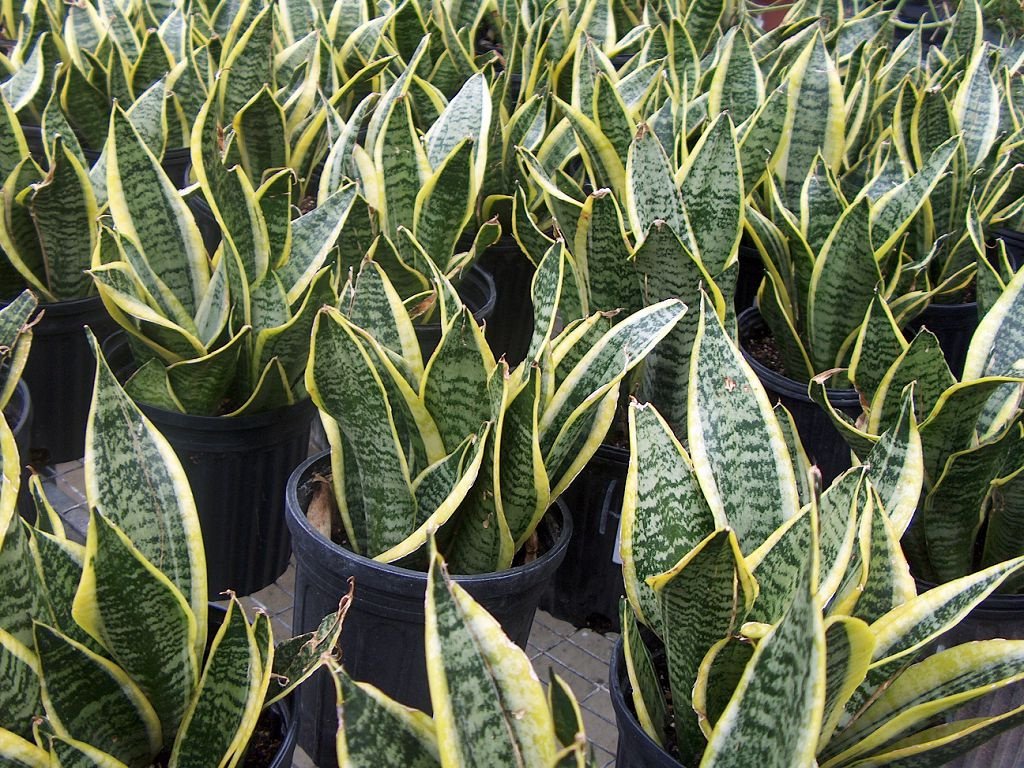
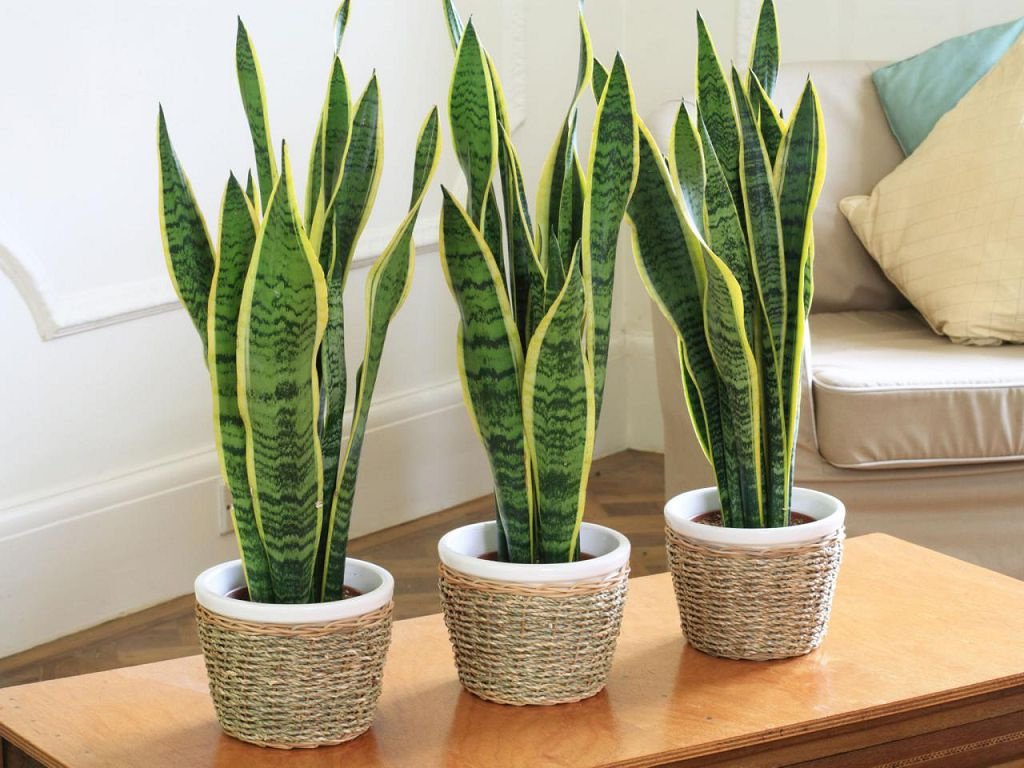
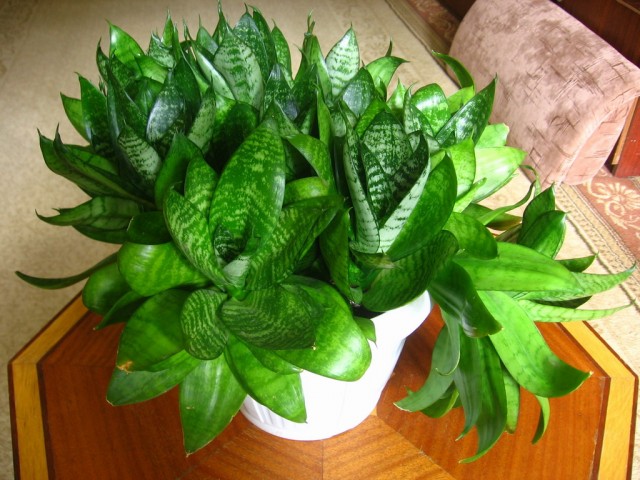
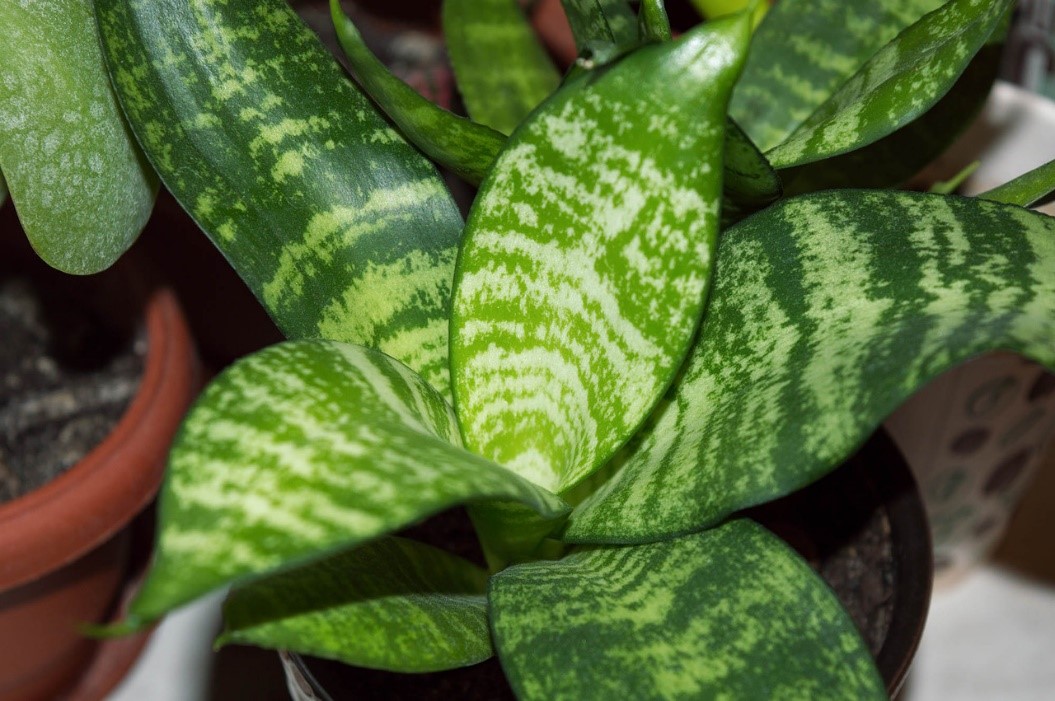
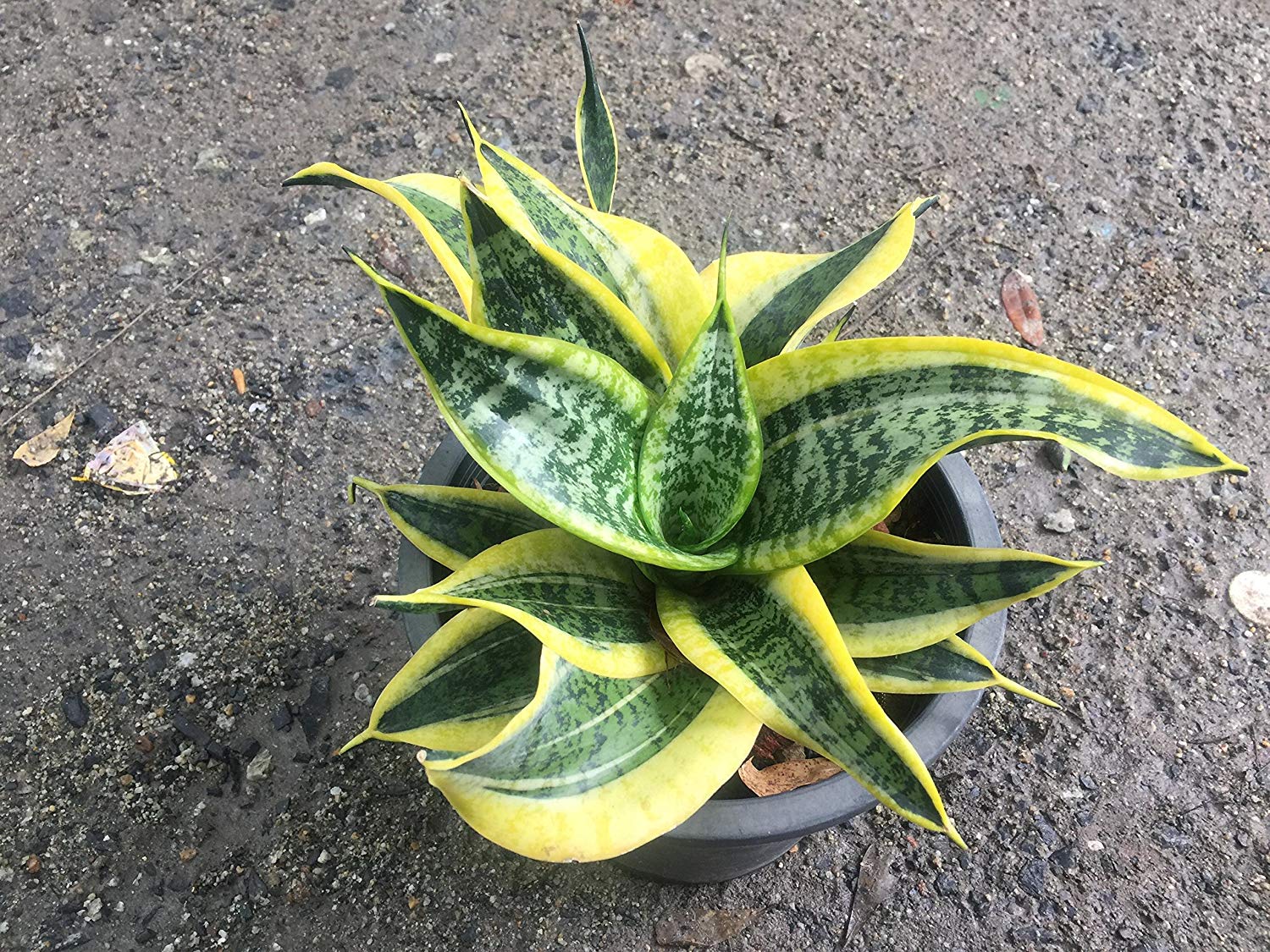
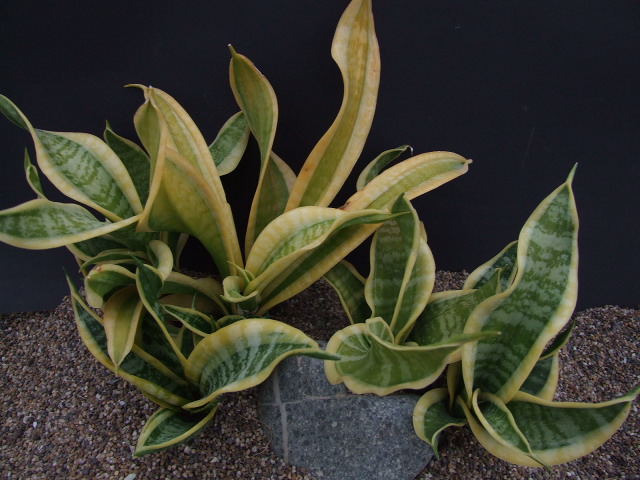
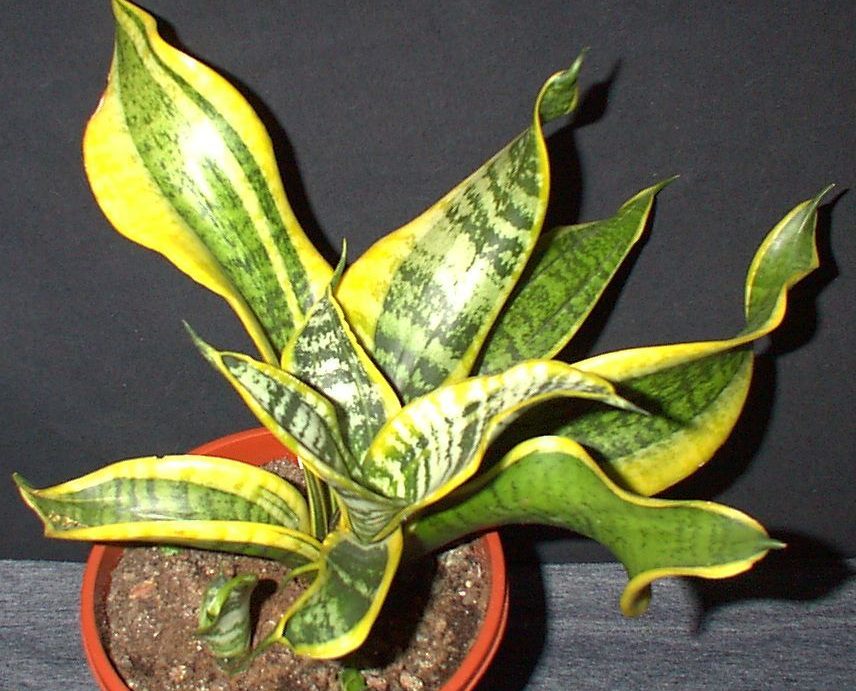

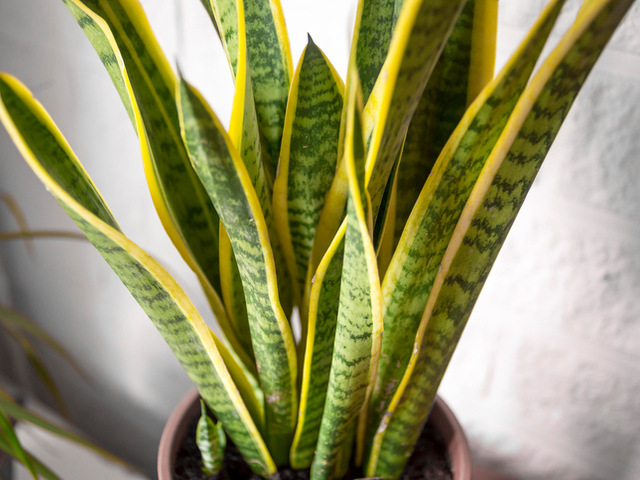
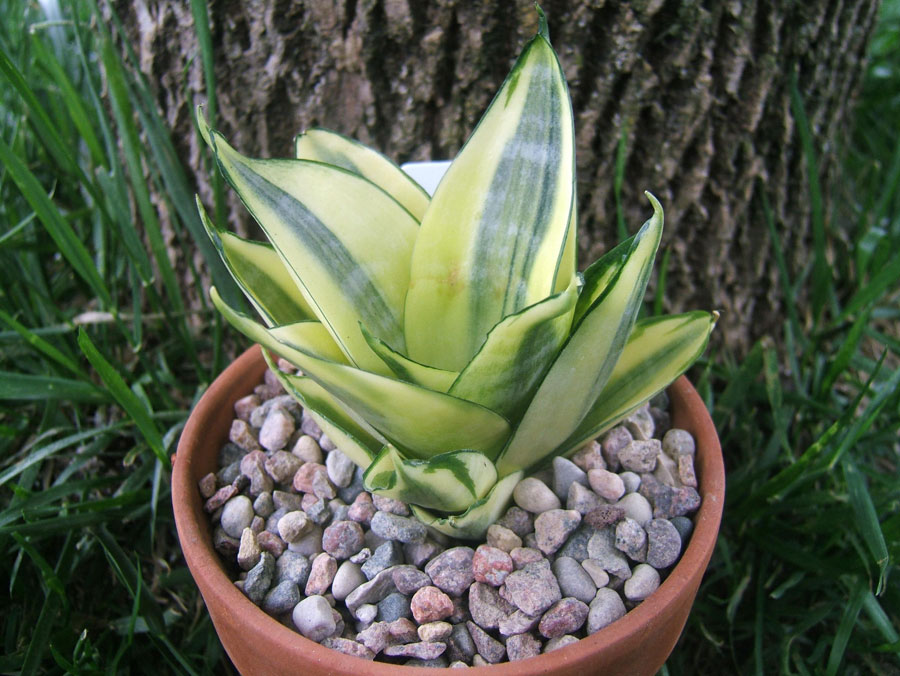
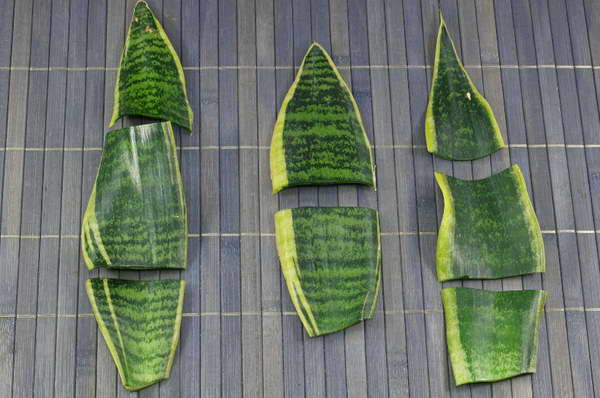
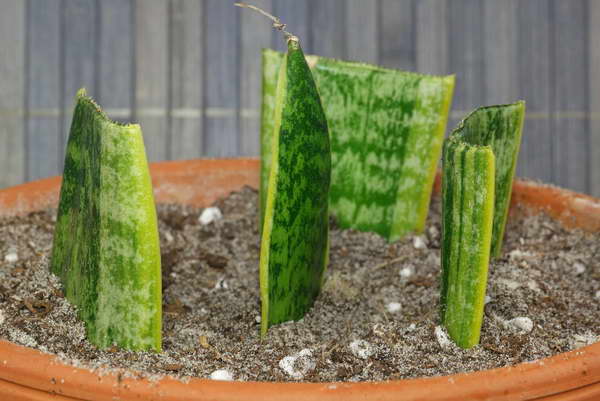
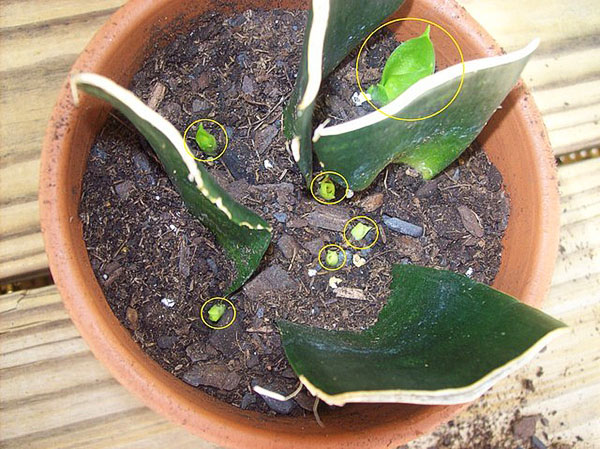



 10 beautiful annuals that bloom all summer
10 beautiful annuals that bloom all summer Sow in the ground, without seedlings: 10 beautiful and unpretentious flowers
Sow in the ground, without seedlings: 10 beautiful and unpretentious flowers Platicodon planting and outdoor care
Platicodon planting and outdoor care Hosta - planting and care in the open ground in the Urals
Hosta - planting and care in the open ground in the Urals